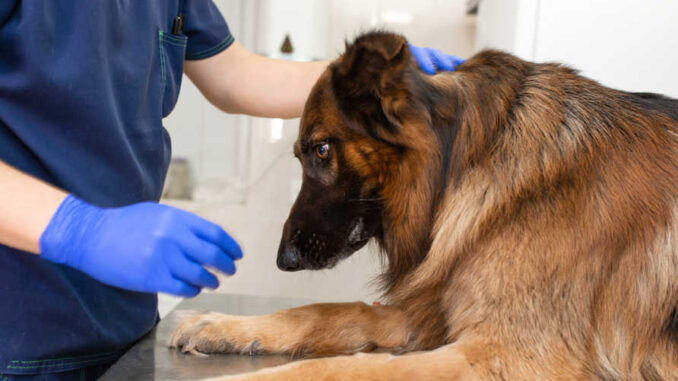
This article was updated on February 13th, 2024

Discovering scabs on your dog’s body can be alarming, particularly when these scabs are on your dog’s neck or head. As a veterinarian, I encounter this issue daily. Scabs can indicate a more serious underlying condition, so it’s important to be aware of what might be causing them.
6 common causes of scabs on a dog’s head or neck:
There are various medical conditions that can cause scabs on the head, ears or neck. For example, allergies can lead to scratching, resulting in scab formation. Skin infections may produce sores that heal and leave scabs behind. Let’s review the most common causes [with pictures]:
1. Wounds
Anyone that cut or scraped themselves while playing as a child will know that a scab often forms afterward. The same is true of dogs – in fact, even more so as they’re so prone to mishaps. Any small injury to the skin will result in bleeding. This blood then dries, forming a scab that protects the vulnerable skin underneath while it heals.
“Most scabs from minor wounds will heal on their own within a few weeks. A one-off wound, for example, that your dog may have picked up play-fighting or running through bushes on a walk, is okay to leave to heal by itself. After all, the presence of a scab means that your dog’s skin is healing as it should.”
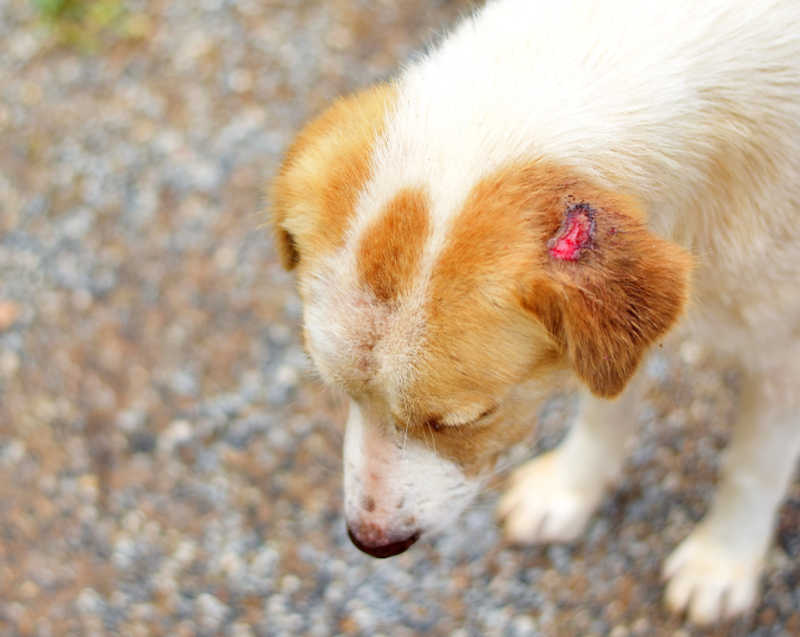
A fresh wound will gradually dry up and become crusty as any blood from the wound clots to seal over the wound. Once the skin has healed underneath, the scab will eventually fall off of its own accord. Most small wounds will heal on their own, provided your dog is not able to keep scratching or licking at the wounded area. More significant wounds may require stitches. Learn more about wound healing in dogs.
2. Self-trauma
Another very common cause of scabbing on a dog’s head or neck is due to self-trauma – that is, when your dog scratches so much that they break the skin, creating a wound followed by a scab in much the same way as described above.
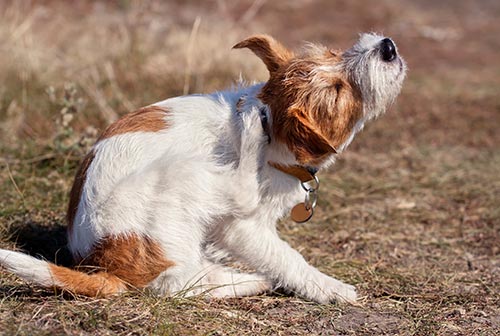
There are many reasons why your dog might scratch at themselves, but the underlying motivation behind it is that they are itchy. If you’ve noticed your dog scratching themselves or rubbing their head/neck along the ground, then there’s likely some underlying reason why they’re itchy, which includes allergies, parasites, and skin infections, as seen in the next sections.
3. Allergies
Dogs often suffer from allergies, which can lead to skin rashes and scabs. Just like humans, dogs can develop hives as a reaction to allergens from food or the environment. This can cause irritation to your dog’s skin and result in hair loss, red skin and scabs on the head or neck, as shown in the pictures below:
Pictures of skin issues as a result of allergies:
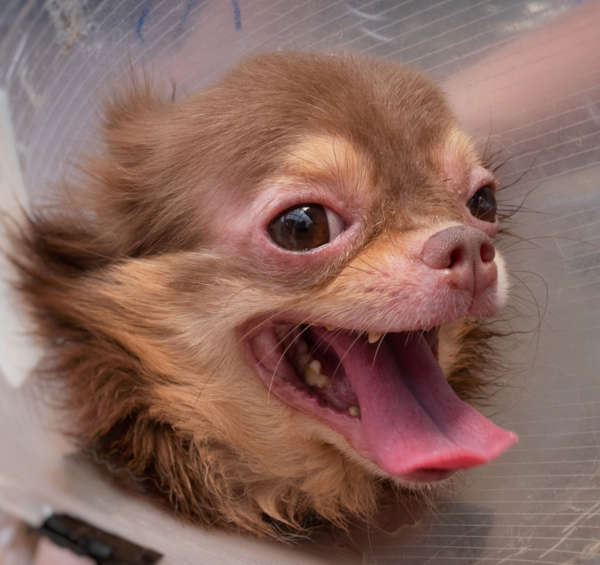
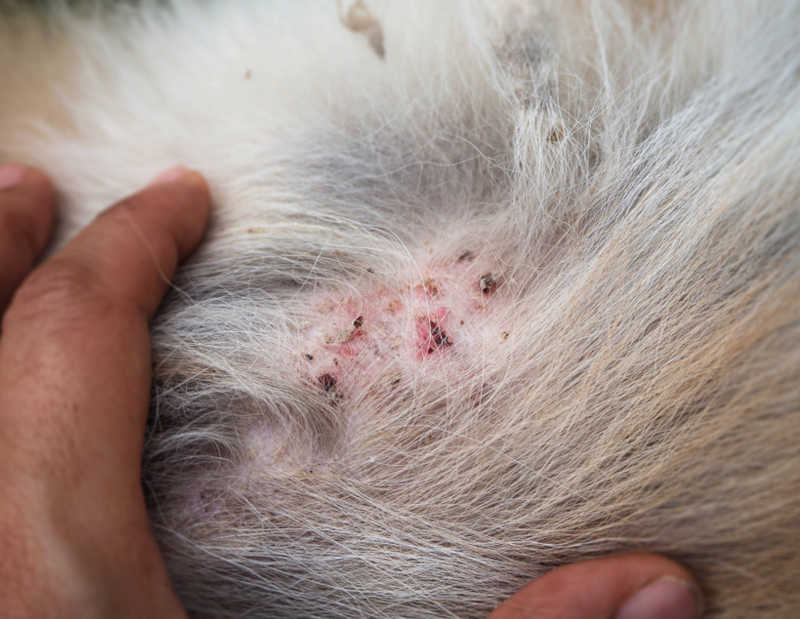
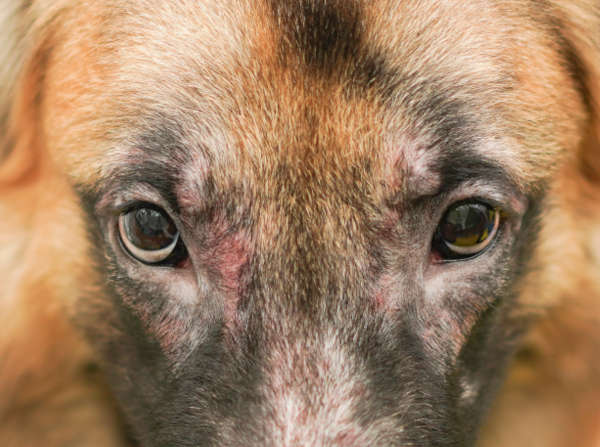
Your dog will try to relieve the itching sensation by scratching (self-traumatizing). Anti-inflammatory medication such as steroids can help in the short term, but the underlying allergy must be addressed to help the scabs heal. It’s best to discuss your dog’s allergies with your veterinarian to identify the root cause and come up with the right treatment.
Learn more about allergies causing scabs.
4. Parasites (fleas, mites, etc)
A common, but easily fixable, cause of self-trauma in dogs is parasites of the skin. These include fleas, ticks, lice, and mites – small organisms that take up residence on or within your dog’s skin, causing damage in the process. This results in inflammation and self-trauma as your dog tries to relieve any itchy sensations they’re feeling.
Pictures of scabs from ticks, mites and fleas:
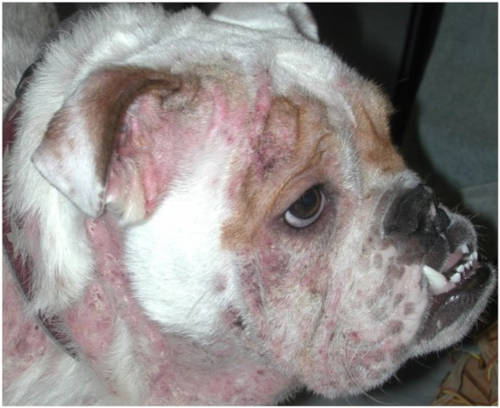
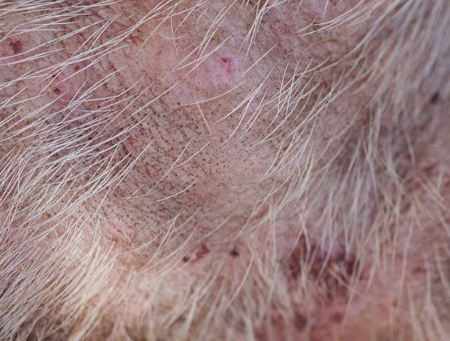
Signs that your dog has fleas include scratching or itching at other areas of the body, hair loss, or dirty fur/black specks in fur: combing with a fine-toothed flea comb can help capture and identify these pests, or their excrements as shown on this picture. If uncertain, consult a veterinarian for a definitive diagnosis.
Be sure to keep your dog’s anti-parasite treatment up to date and visit your vet if you suspect your dog already has a parasite infestation.
Read more about Flea Allergies and Scabs, and Tick Scabs.
5. Dog acne
Dog acne is inflammation in the outermost layers of the skin, called the epidermis, that results in inflamed red or white bumps on the head – around the lips, chin, and muzzle. These bumps or pimples arise from clogged pores and contain a mix of oils, bacteria, and dead skin cells.
Pictures of dog acne:
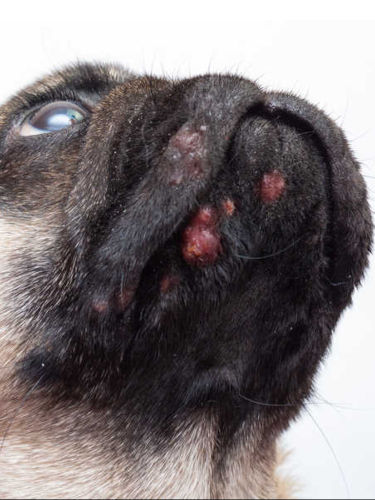

Your vet may refer to the condition as folliculitis or furunculosis. Folliculitis, or inflammation in the follicle, occurs in the most superficial layers of the skin, meaning it isn’t very deep. Furunculosis is a deeper, more painful infection that causes abscesses and pimples.
Learn more: Dog Acne [Pictures, Symptoms, Treatments]
6. Skin infections
Infection of the skin by bacteria or fungi results in damage and inflammation as these microorganisms multiply within your dog’s skin. Signs of skin infections in dogs may include:
- redness,
- hair loss or dry skin,
- scabs,
- foul odor, and
- excessive licking or scratching.
Pictures of scabs from skin infections:
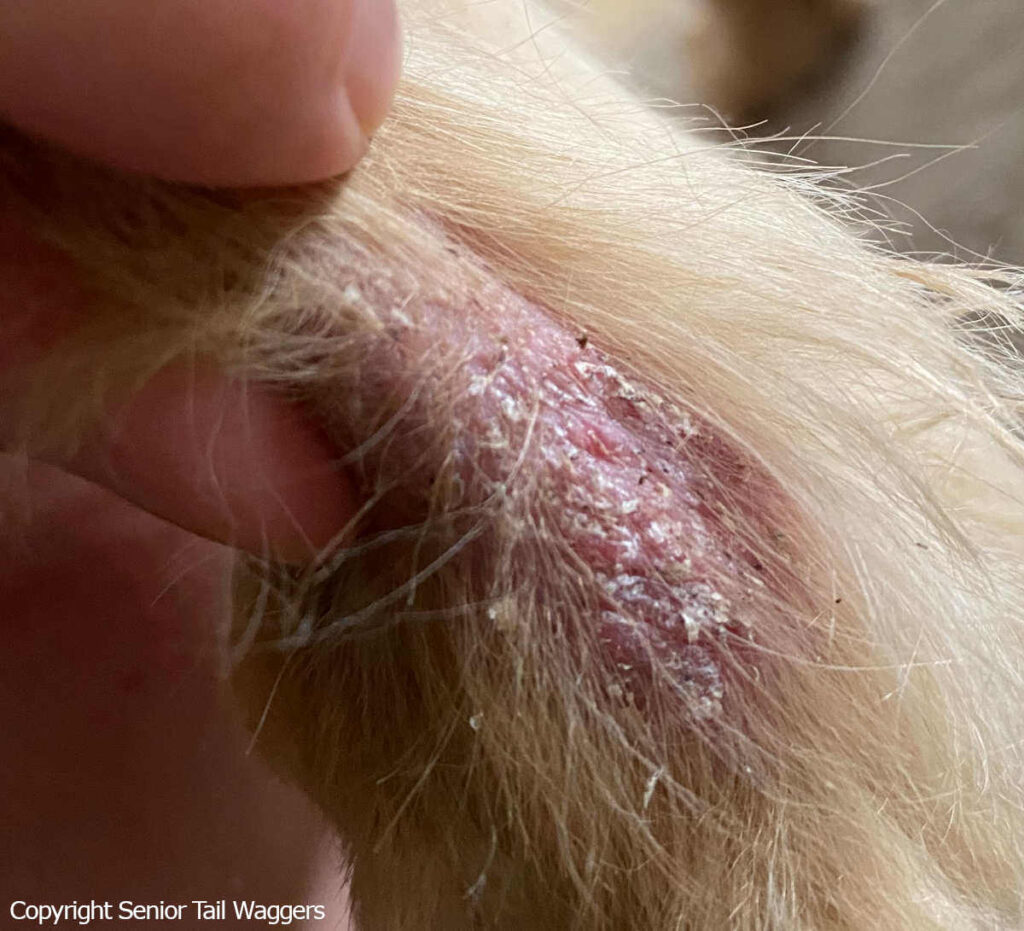
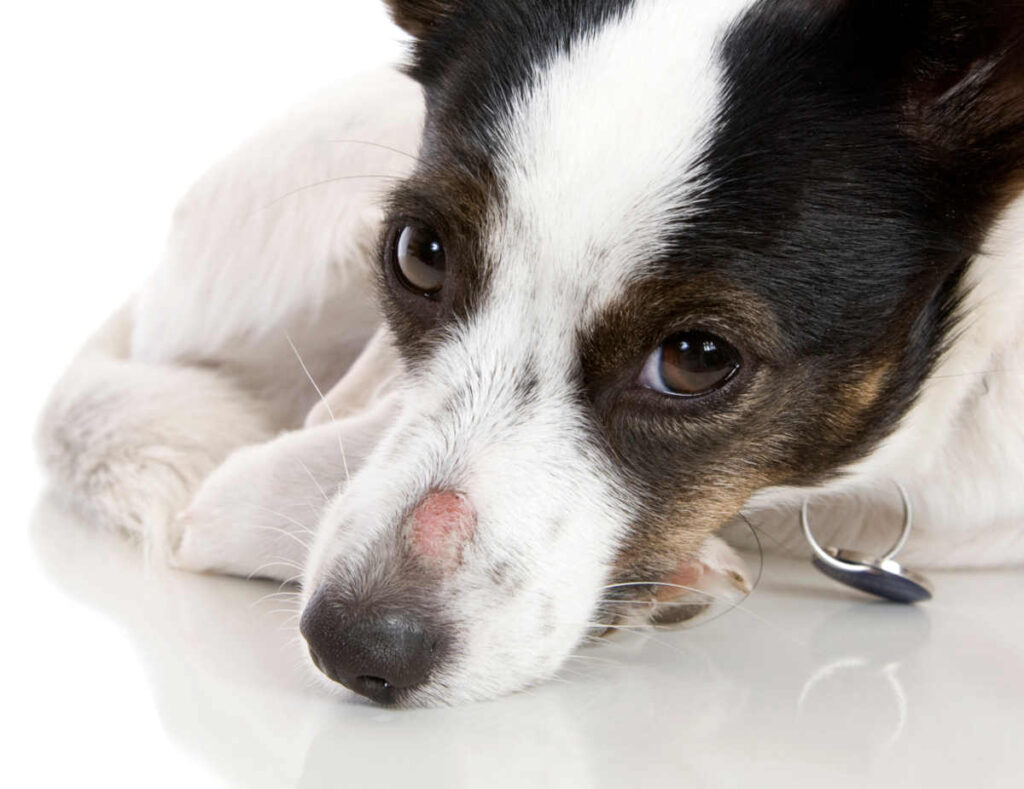
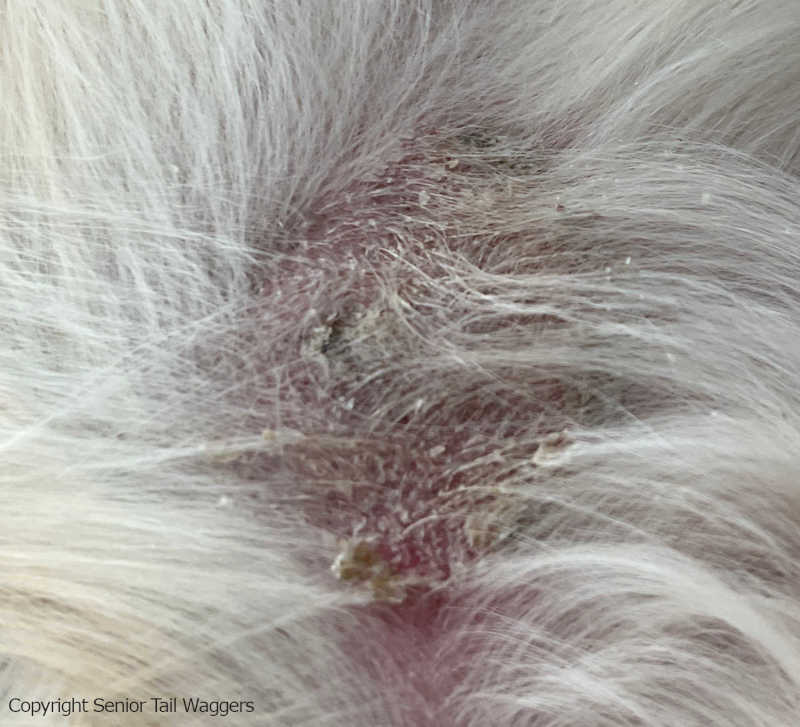
Any signs of pus or a bad smell from your dog’s skin may indicate that they have a skin infection. If this is the case, visit your vet as soon as possible, as your dog may require antibiotics or antifungal treatment. Learn more about Skin Infections in Dogs.
How do you know if your dog is suffering from of these conditions?
Dr. Crow explains:
“If there is any hidden medical condition at play, the scab may take much longer to heal, if at all, without the proper care. Therefore, scabs that lasts for weeks should be examined by your veterinarian as it will likely require veterinary treatment. Your dog will also likely show other symptoms such as itching, red skin or hair loss.”
Some home remedies can be used to treat mild scabs
If you’ve noticed scabs on your dog’s head or neck, there are some things at home that you may be able to do to help.
“The first rule of dealing with a scab is ‘less is more’. A scab is a good thing. It is the body’s way of healing a break in the skin, and removing the scab too early can prevent the healing process from occurring properly. Interfering with a scab can also result in scarring.”
Here are 4 things you can do at home to help your dog’s scabs heal properly:
• Use an Elizabethan collar if your dog is scratching
Scratching can prevent a scab from healing properly and cause scarring. Using an Elizabethan collar such as this one below prevents your dog from itching and scratching. This will allow any scabs to heal uninterrupted and break the itch cycle that your dog may have gotten itself into.
- 【GREAT PROTECTOR】- This dog cones for pets can well protect your pets from injuries, rashes and post surgery wounds. Help to prevent pets from biting and licking their injured area or surgical site. Promote recovering from surgery or wounds. Make the recovery process more pleasant
• Gently bathe the area with salt water
Be sure not to remove the scab by accident but remove any excess dirt or hair that may have found itself in the area. This will cleanse the region and prevent infections from occurring.
• Treat your dog for parasites
If your dog isn’t up to date with their anti-parasite treatment, then do this. Not all parasites are visible to the naked eye, and giving your dog this relatively inexpensive treatment rules it out as a possible underlying cause. Be sure to use a veterinary-strength product.
• Try a hypoallergenic diet if the issue is due to allergies
If your dog is itching or rubbing their head and neck excessively, then allergies might be to blame. You could try your dog on a hypoallergenic diet for 4-6 weeks to see if this makes a difference (please always talk to your veterinarian before changing your dog’s diet).
- Hill's Prescription Diet z/d Skin/Food Sensitivities Dry Dog Food is specially formulated by Hill’s nutritionists and veterinarians to support your dog’s skin and food sensitivities
See your vet if the problem persists, spreads, or worsens
Below are signs that veterinary intervention is required. Prompt veterinary treatment will help get the best outcome for your dog:
- Scabs have been appearing on your dog’s head and neck for a while now (if they do not heal within a few days)
- Your dog is excessively itching: if your dog is constantly scratching or biting, it can cause further irritation and lead to infection. This behavior may indicate that the scabs are itchy or painful and require treatment.
- The scabs are large, numerous, or spreading.
- The scabs are oozing or bleeding: oozing or bleeding can be a sign of infection or injury.
- Your dog is showing other signs of illness: If your dog has less energy, less appetite, fever, appears to be in pain or is showing any other signs of being ill.
- You see signs of an infection or excessive redness: if there are signs of infection in the skin, such as pus and discharge or if the skin around the head or neck is very red and sore.
- Your dog has a large wound that is partially healing: any large wounds that are partially scabbing but not healing very well may require stitches.
Vet diagnosis
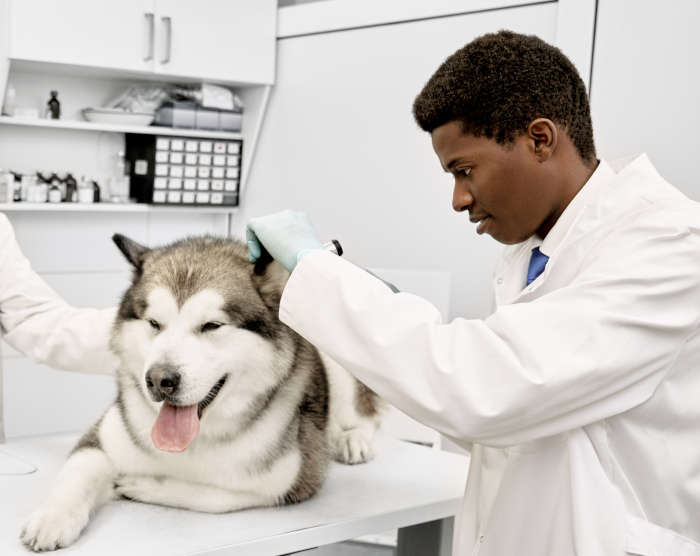
Your vet has many tools at their disposal for getting to the root cause of your dog’s scabby face and neck. After talking to you to get a history of your dog’s issue (see questions your vet might ask you), they might want to take samples of your dog’s skin.
“These samples include taking skin scrapes, hair plucks, and impression smears of your dog’s skin – this allows your vet to detect parasites, bacteria, or fungi that might be contributing to the scabs. Swabs can also be taken to perform what’s called a culture and sensitivity, this involves growing any bacteria that might be present and testing different antibiotics against it so that your dog is started on the correct treatment.”
If allergies are suspected, then blood tests can be performed to identify potential food and environmental allergens that your dog is reacting to, so that they can then be avoided.
Do your dog’s scabs look like something else?
If the pictures above don’t match what you’re seeing, we recommend checking out the following articles with additional pictures for comparison:
Questions your vet might ask you:
It’s important to be prepared for what questions your vet might ask you, this will save both you and them time and allow for quicker treatment of your dog’s scabs. These questions might include:
- When did you first notice the scabs? How long have they been there?
- Are they getting worse?
- Have you noticed scabs anywhere else on your dog’s body?
- Was there any obvious trauma or cause?
- Does your dog suffer from allergies?
- Is your dog otherwise well in himself? Any other symptoms?
- Is your dog itching?
- What treatment options have you tried already?
How do you define “scabs”?
The definition of a scab is a broad one, and it can apply to many different abnormalities of the skin. However, scabs are generally seen to be dry, crusty, red bumps on the skin. These form due to damage to the skin and resultant bleeding – dry skin cells and blood form a scab which gradually starts to peel off as the layers of skin underneath push through.
Learn more:
Pictures of 21 Common Dog Skin Problems [with Vet Advice]
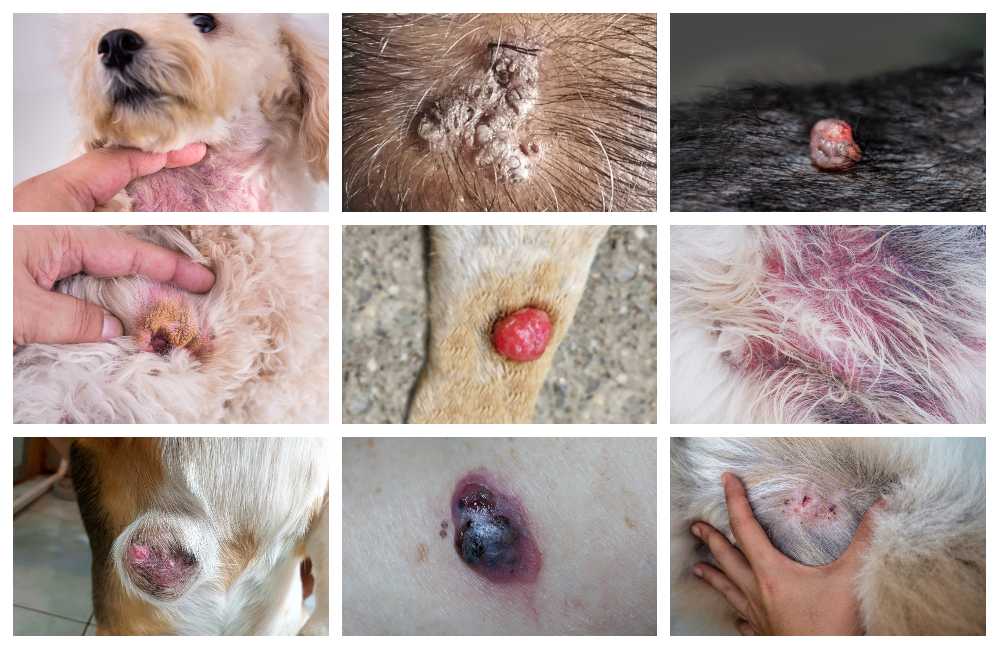
Related posts:
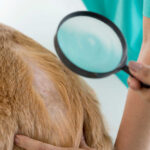 Scabs on Dogs [With Pictures]: Our Vets Explain What To Do - One common problem we often encounter as veterinarians is the presence of scabs (serous crusts) on a dog’s skin. Scabs… [...]
Scabs on Dogs [With Pictures]: Our Vets Explain What To Do - One common problem we often encounter as veterinarians is the presence of scabs (serous crusts) on a dog’s skin. Scabs… [...]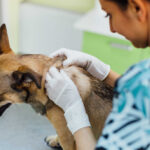 Crusty Scabs on Dogs: Top Causes and What To Do [Vet Advice] - Scabs serve as protective shields for injured skin, forming when skin is compromised, akin to a band-aid's role in human… [...]
Crusty Scabs on Dogs: Top Causes and What To Do [Vet Advice] - Scabs serve as protective shields for injured skin, forming when skin is compromised, akin to a band-aid's role in human… [...] Dog with Scabs & Losing Hair: Our Vet Explains What to Do - A dog losing hair in patches with scabs is a problem that many owners come to see us about at… [...]
Dog with Scabs & Losing Hair: Our Vet Explains What to Do - A dog losing hair in patches with scabs is a problem that many owners come to see us about at… [...] Black Scabs on Dog: Top Reasons & What to Do - The majority of black scabs will be insignificant and pose no threat to your dog. However, some black scabs could… [...]
Black Scabs on Dog: Top Reasons & What to Do - The majority of black scabs will be insignificant and pose no threat to your dog. However, some black scabs could… [...]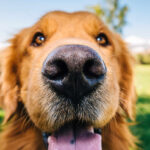 Dog Nose Scabs and Lumps [Pictures & Vet Advice] - Dogs use their nose and sense of smell to explore the world around them. As most owners know, dogs will… [...]
Dog Nose Scabs and Lumps [Pictures & Vet Advice] - Dogs use their nose and sense of smell to explore the world around them. As most owners know, dogs will… [...]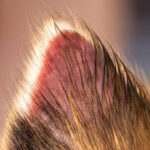 Dog Has Scabs On Ears: Top Causes & Vet Advice - In this article, our experienced veterinarian Dr. Chyrle Bonk walks you through common causes of scabs on a dog’s ears,… [...]
Dog Has Scabs On Ears: Top Causes & Vet Advice - In this article, our experienced veterinarian Dr. Chyrle Bonk walks you through common causes of scabs on a dog’s ears,… [...]Disclaimer: This website's content is not a substitute for veterinary care. Always consult with your veterinarian for healthcare decisions. Read More.






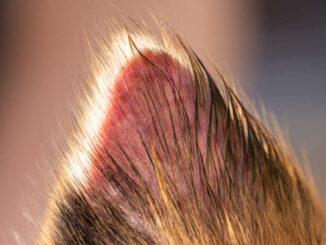
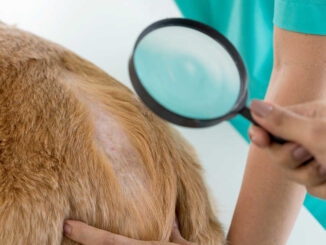
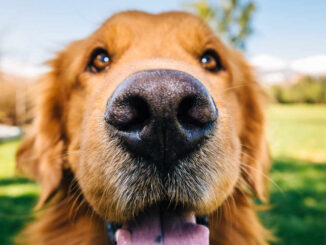
How can I help my shitzu? Big black crusty scab on top head
Hey Diana, I’m sorry to hear about this. A large scab can be many things including a hot spot (acute moist dermatitis), a healing wound, a sign of parasites, a wound caused by scratching secondary to allergies or a skin infection etc.
From home, we should ensure he cannot rub at it, which may mean using a buster collar.
Do not bandage or cover it.
A vet visit is needed to assess him and this scab in case he may need e.g. wound debridement and/or some medication such as antibiotics and anti inflammatories.
Dr Linda Simon MVB MRCVS
“The information on this website is not a substitute for in-person veterinary care. Always seek advice from your veterinarian if you have concerns about your pet’s medical condition.”
My one yr old black lab has quite a few scab looking areas on his face and top of his head. He can’t reach them to scratch, but not real itchy. Seem to be multiplying
Hi Debbie and thanks for your question. I’m sorry to hear about this issue your Lab has. When a dog has skin lesions but no itching (which would include rubbing or scratching), we are usually not dealing with allergies. More commonly it would be something like Demodectic mange (especially in younger dogs) or a fungal infection.
The first step is a check with your local vet. They’ll examine him and may perform a skin swab and scrape, to get a better understanding of what is going on. They should also assess him all over, ensuring he does not have e.g. any ear infection or oral issue, such as gingivitis.
His treatment is going to depend on what they find and may include e.g. external parasite therapy, an anti fungal, a medicated wash etc.
From home, keep an eye out for any signs of itching, using a buster collar if it begins. You can use cotton balls and salt water to keep the skin clean.
As I say though, a vet check is important here.
“The information on this website is not a substitute for in-person veterinary care. Always seek advice from your veterinarian if you have concerns about your pet’s medical condition.”